FOUND NO MORE AT ALL 1998
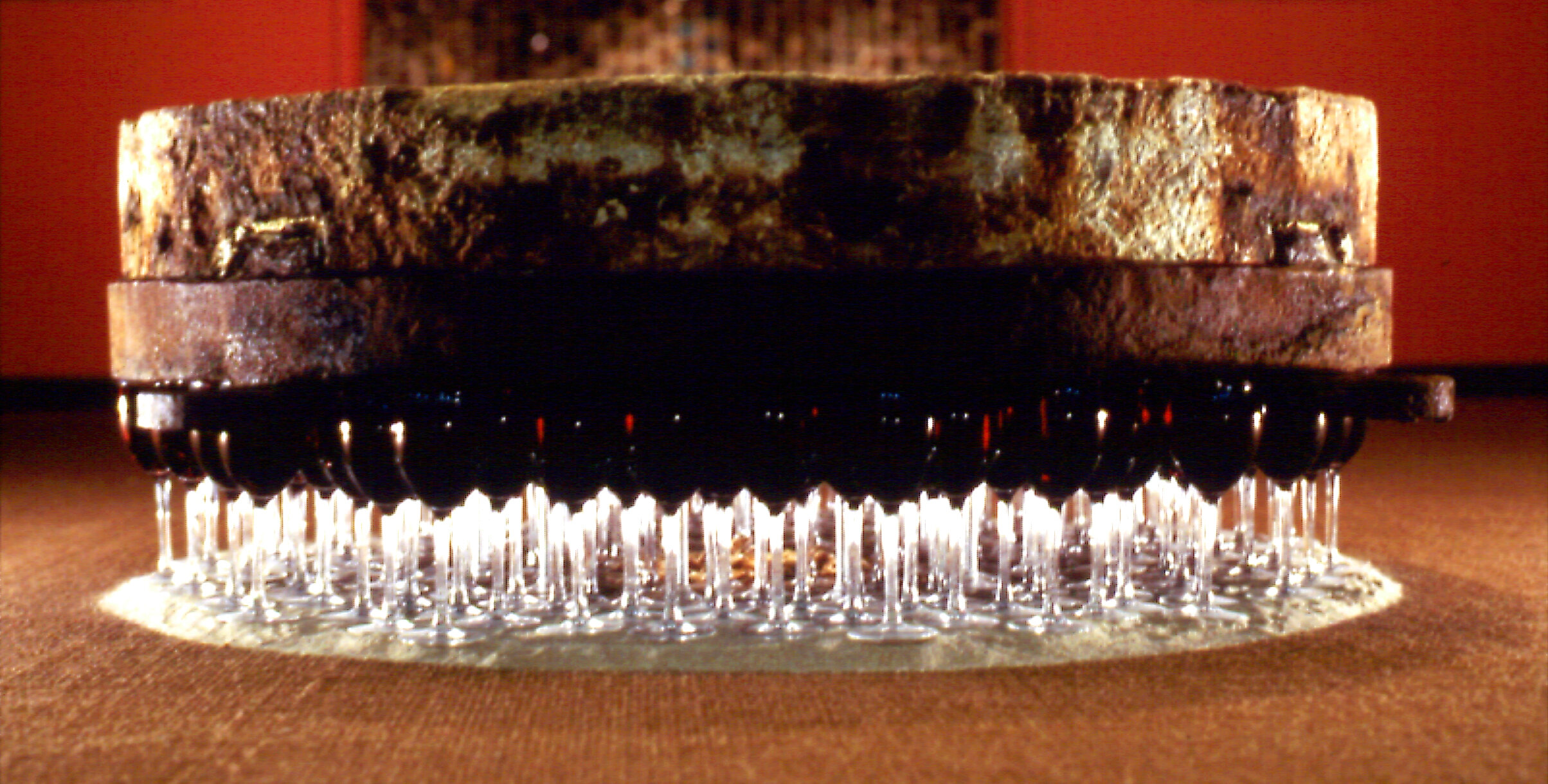
FOUND NO MORE AT ALL 1998
Found No More At All premiered in in Apocalypse Now And Then: Art at the End of Time at DePaul University Art Gallery in Chicago. The sculpture was inspired by St. John the Divine's accounts in Revelations of an apocalyptic sea of glass mingled with fire, the violence of angelic judgment, and the silencing of artisans of whatsoever craft they be. This 2,000 pound, 52 inch diameter, iron-banded marble millstone was found in the rubble of an exploded paint factory, and is balanced on 144 wine-filled goblets on a bed of pulverized bone.
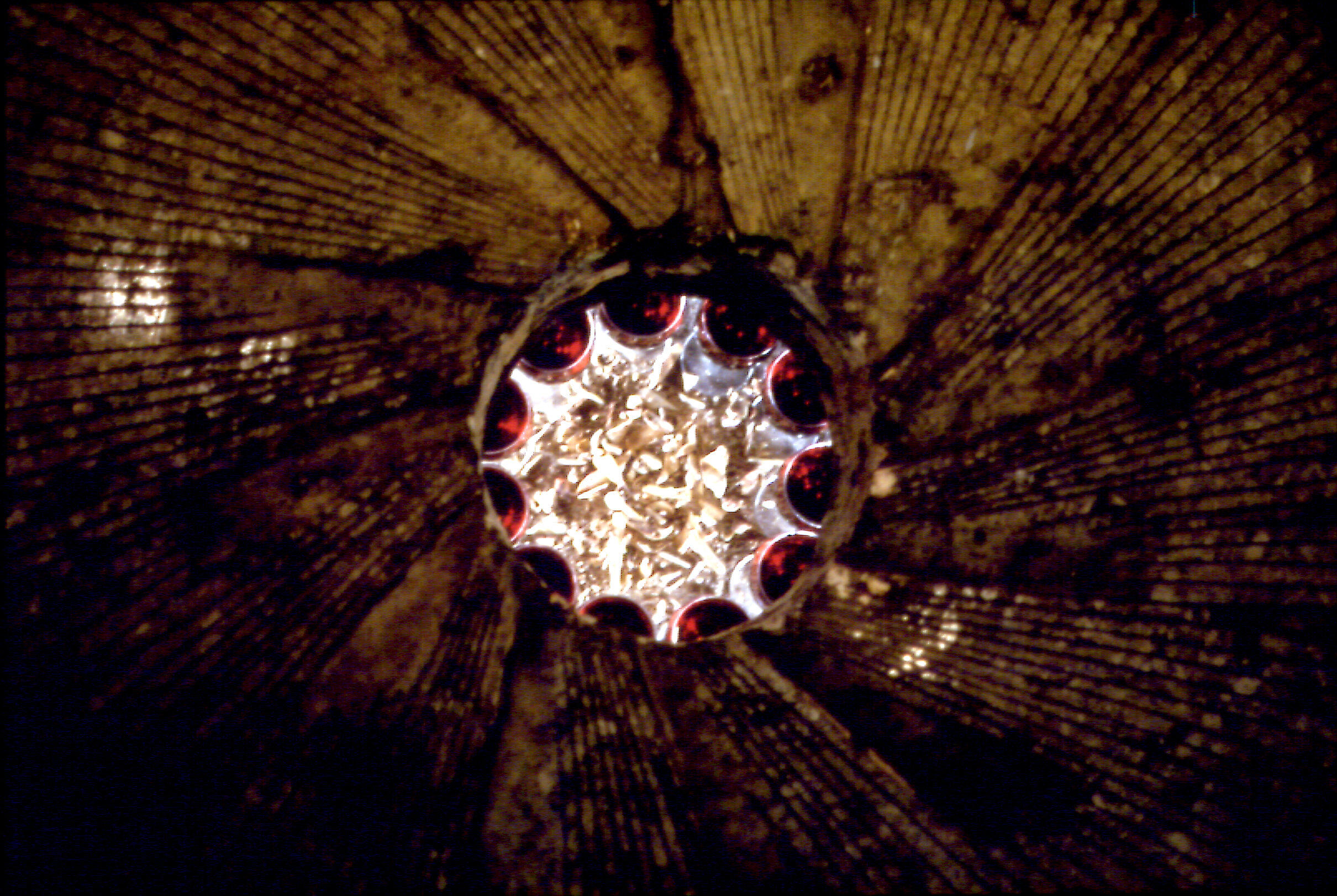
FOUND NO MORE AT ALL 1998
Detail from above millstone
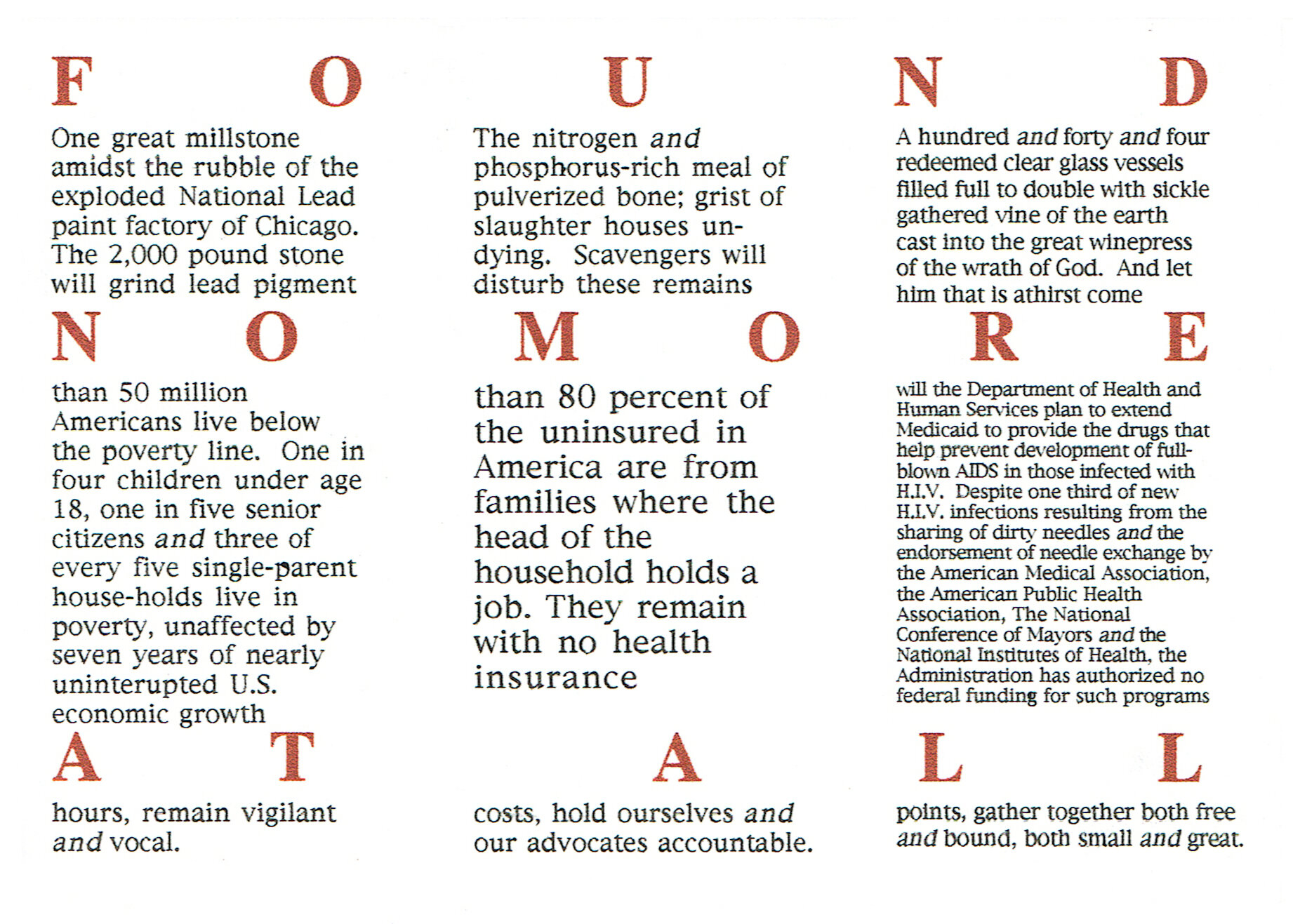
FOUND NO MORE AT ALL 1998
Texts that accompanied the exhibit.
(Statistics are from 1998, when the piece premiered)
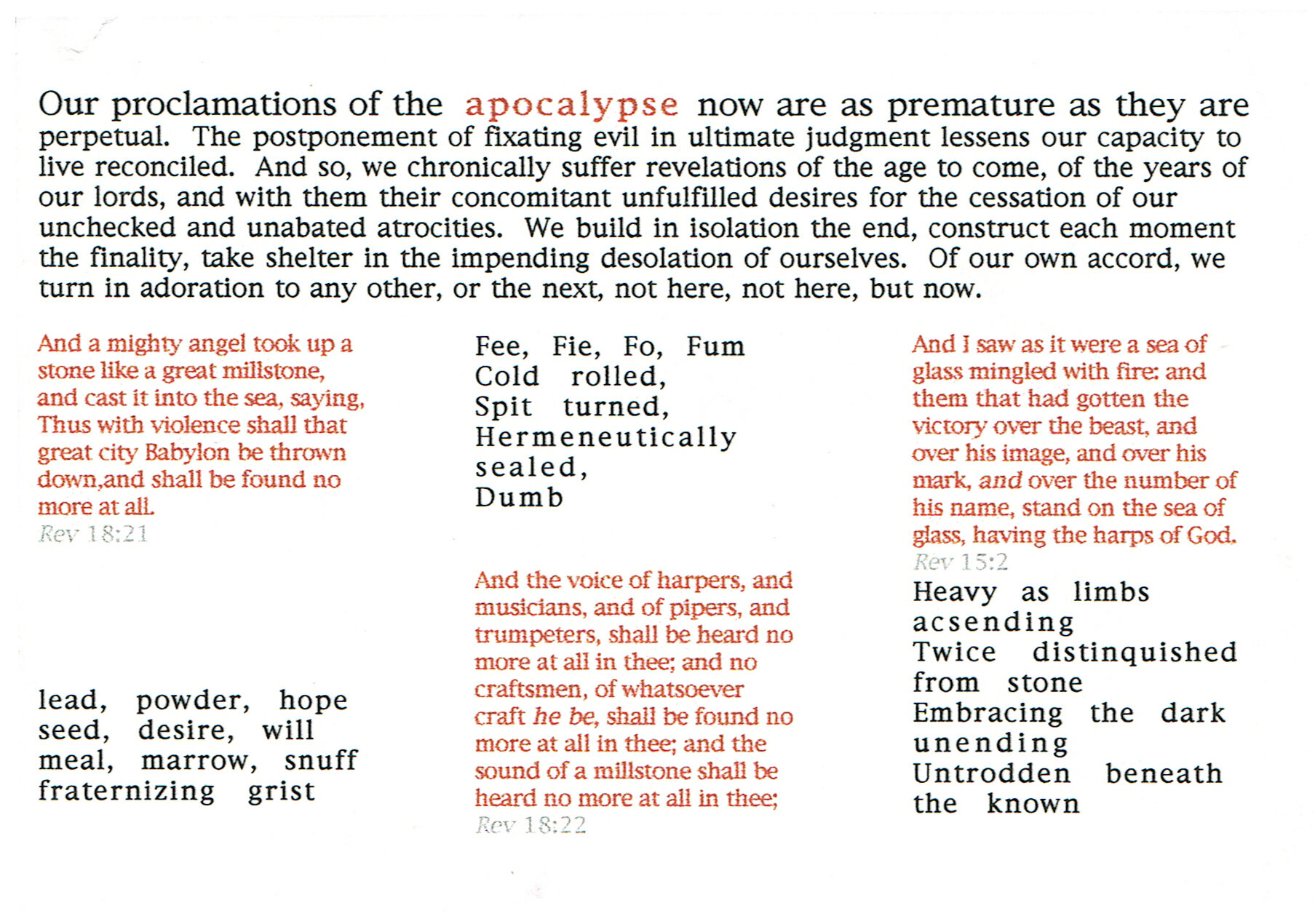
FOUND NO MORE AT ALL 1998
Texts that accompanied the exhibit.
(Statistics are from 1998, when the piece premiered)
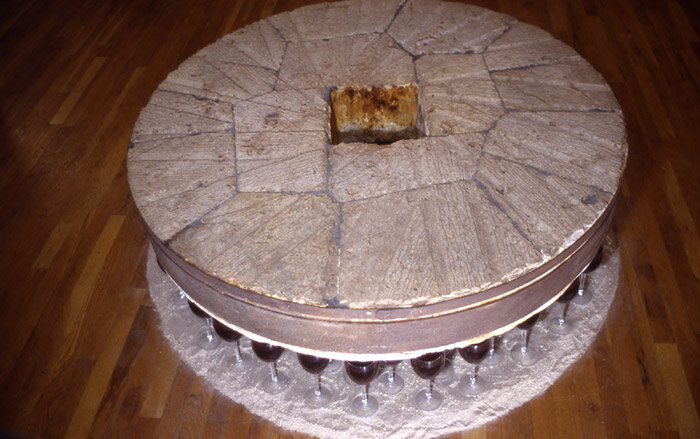
FOUND NO MORE AT ALL 1998
A 1998 reconstructed version from New Voices/New Visions at The Alternative Museum in New York City used a wider 18th century millstone from the Tuthilltown Mill in Gardiner, New York. Pieced together from granite used for ballast on a ship from France, this stone ground wheat, rye and corn, in a water-powered mill built by slaves. Both versions, with their biblical and historical references, question the use and abuse of power, collective resistance, and personal transcendence.
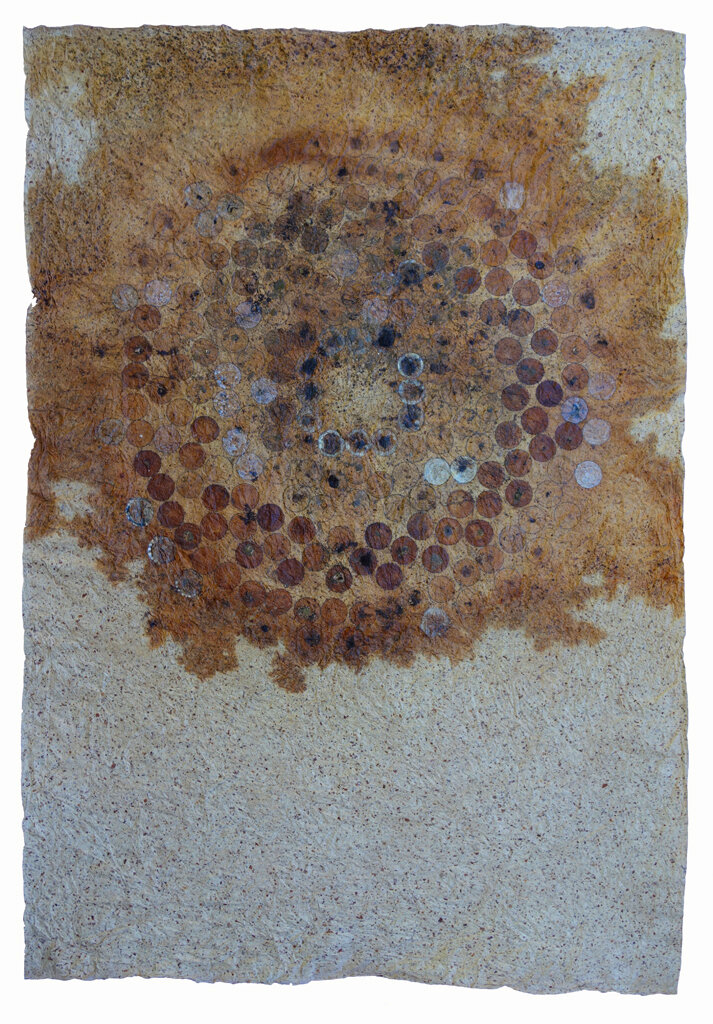
FOUND NO MORE AT ALL 1998
Wine, gouache, human blood, and mold on Korean paper
34.5 x 23.75 inches
The circles in the Found No More drawings represent the 144 wine glasses that support the millstone, and are drawn with the materials used in the sculpture: blood, wine and ground bone. With their biblical and historical references, the works question the use and abuse of power, collective resistance, and personal transcendence, even in the face of apocalyptic disaster.
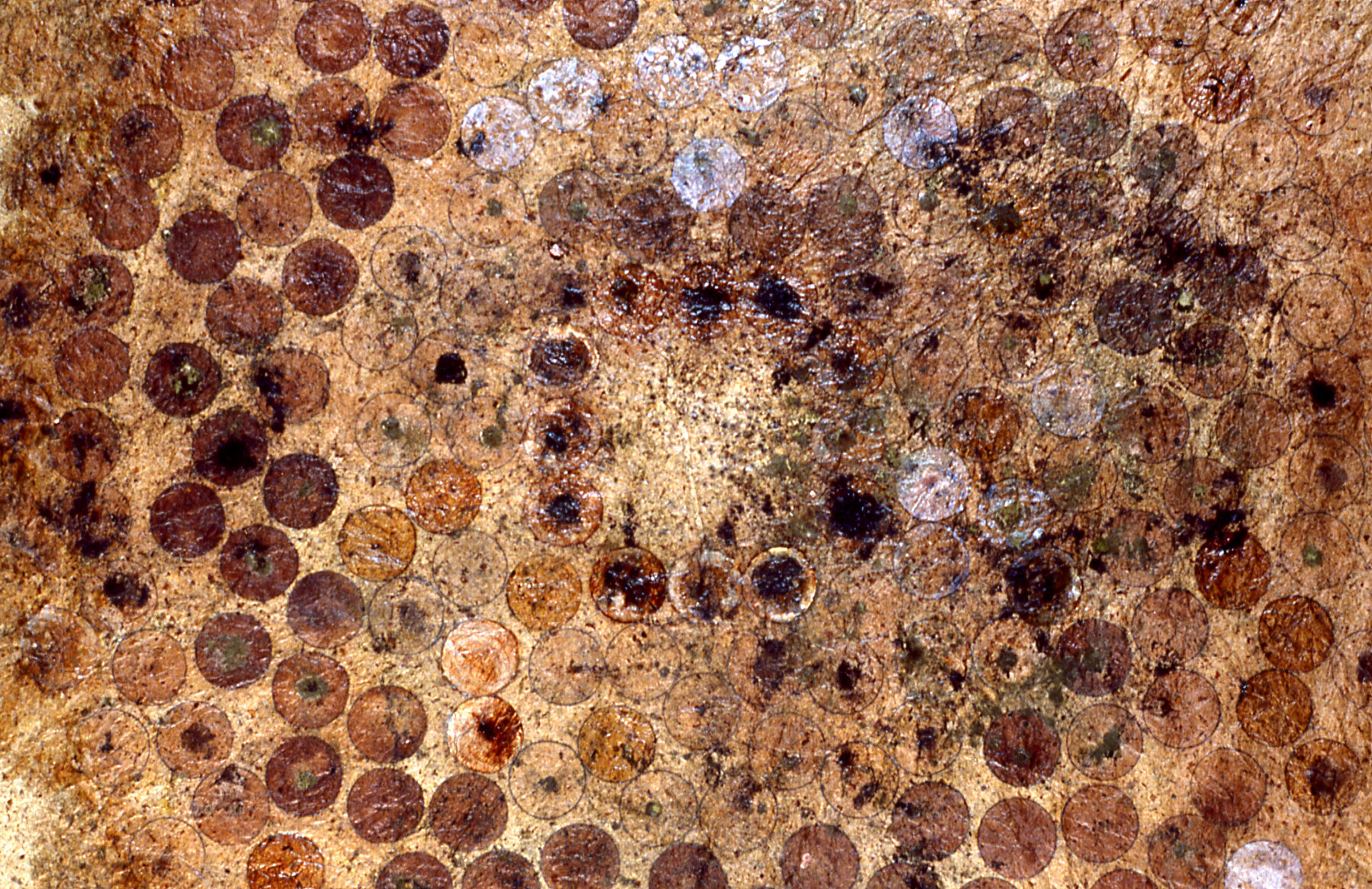
FOUND NO MORE AT ALL 1998
Detail of drawing